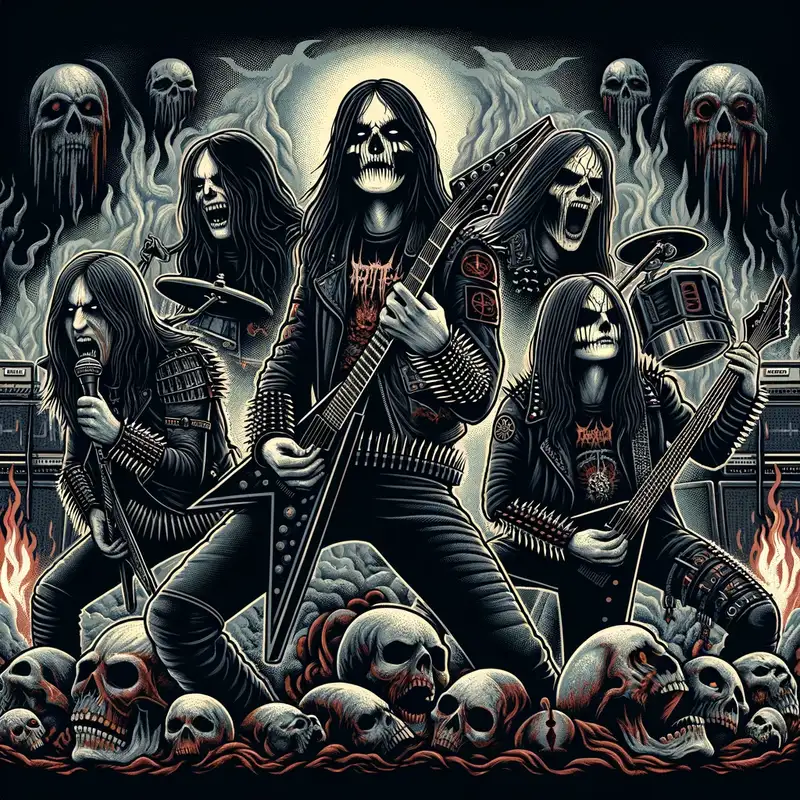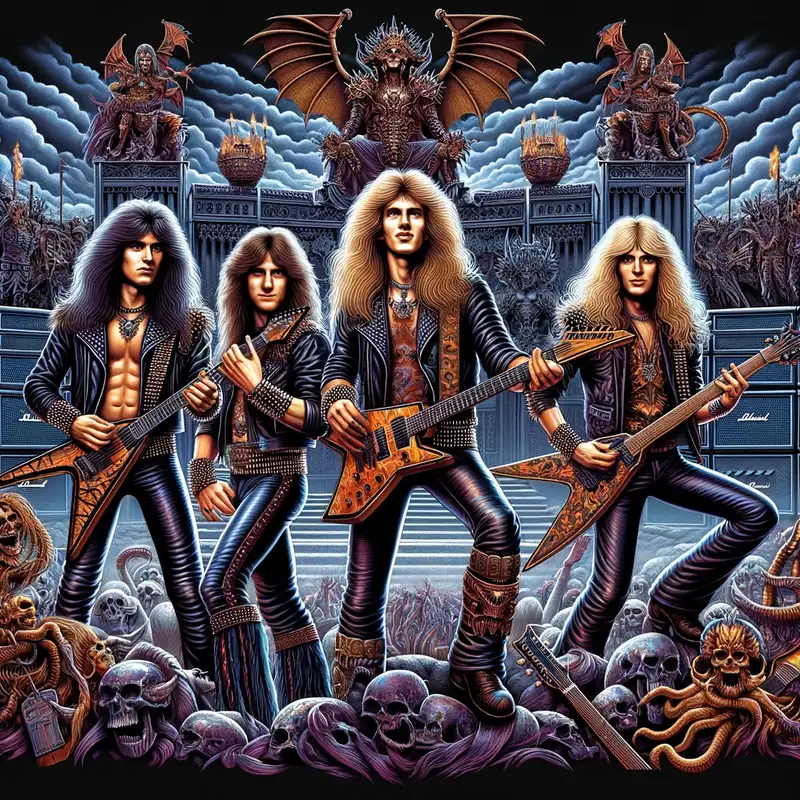Death Metal

Death metal, a subgenre of heavy metal music, emerged in the 1980s. Tracing its roots from thrash metal bands like Slayer and Kreator, death metal evolved into a unique form, characterized by its intense speed, complex song structures, and dark thematic content.
Table of Contents
Musical Characteristics
The signature sound of death metal revolves around heavily distorted guitars, blast beat drumming, and deep, growling vocals. Unlike its predecessors, the genre doesn’t shy away from experimenting with complex time signatures and intricate solos. The lyrical themes often explore dark and macabre topics, including death, gore, and existentialism.
Subgenres and Regional Scenes
As with many forms of music, death metal further branched out into various subgenres:
- Technical Death Metal: Focuses on complex song structures and musicianship. Bands like Necrophagist and Obscura exemplify this style.
- Melodic Death Metal: Incorporates melodic elements, often drawing from traditional heavy metal. Bands such as At the Gates and In Flames are torchbearers of this subgenre.
- Brutal Death Metal and Slam: Prioritizes sheer heaviness and guttural vocals. Bands like Suffocation and Devourment are known for this style.
- Death-doom: Combines the slow tempos of doom metal with the heaviness of death metal, with bands like Paradise Lost and My Dying Bride leading the way.
Regions also had a profound influence on the development of death metal. Florida, Sweden, and New York are some of the hubs that fostered and developed distinctive death metal sounds.
Cultural Impact and Controversies
Death metal, given its extreme nature, often found itself at the center of controversy. The genre has also been misguidedly linked to various crimes and antisocial behavior. However, despite its divisive nature, death metal has undeniably left a lasting mark on popular culture, influencing movies, fashion, and even literature.


